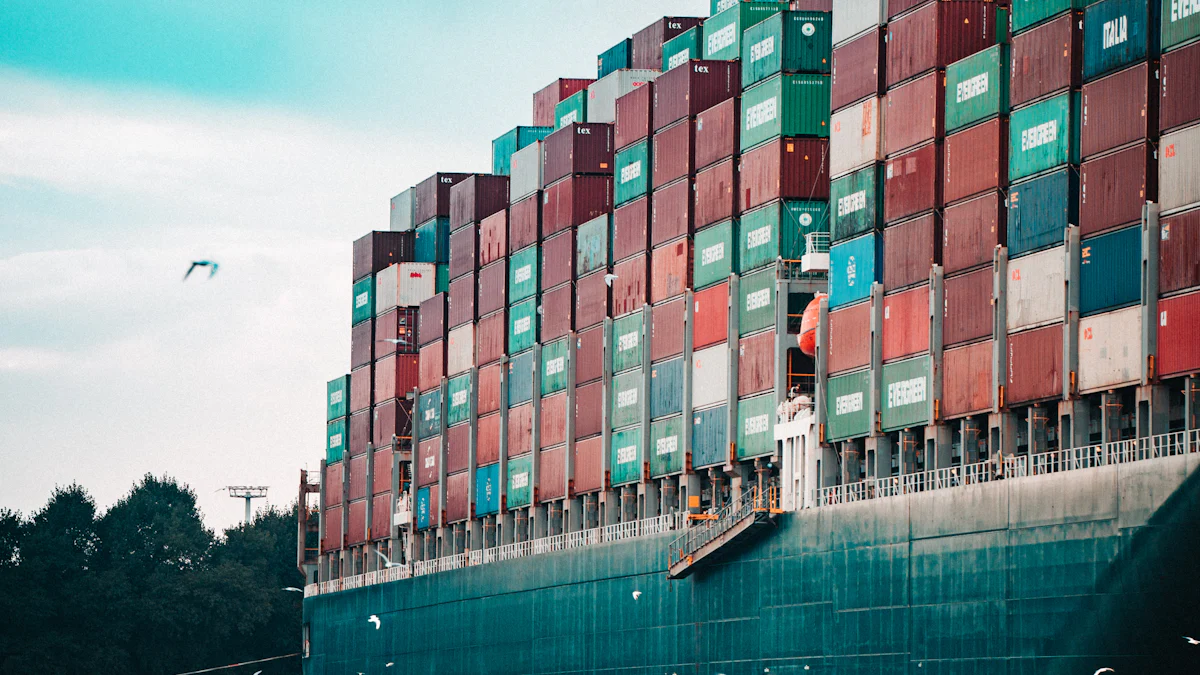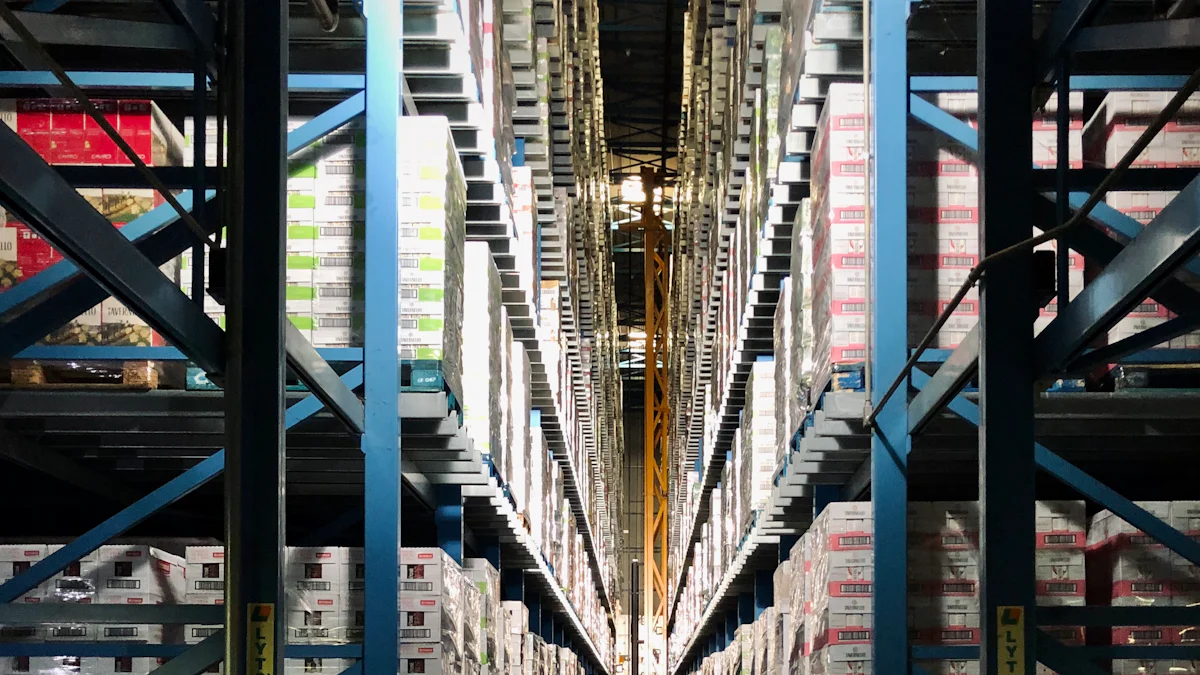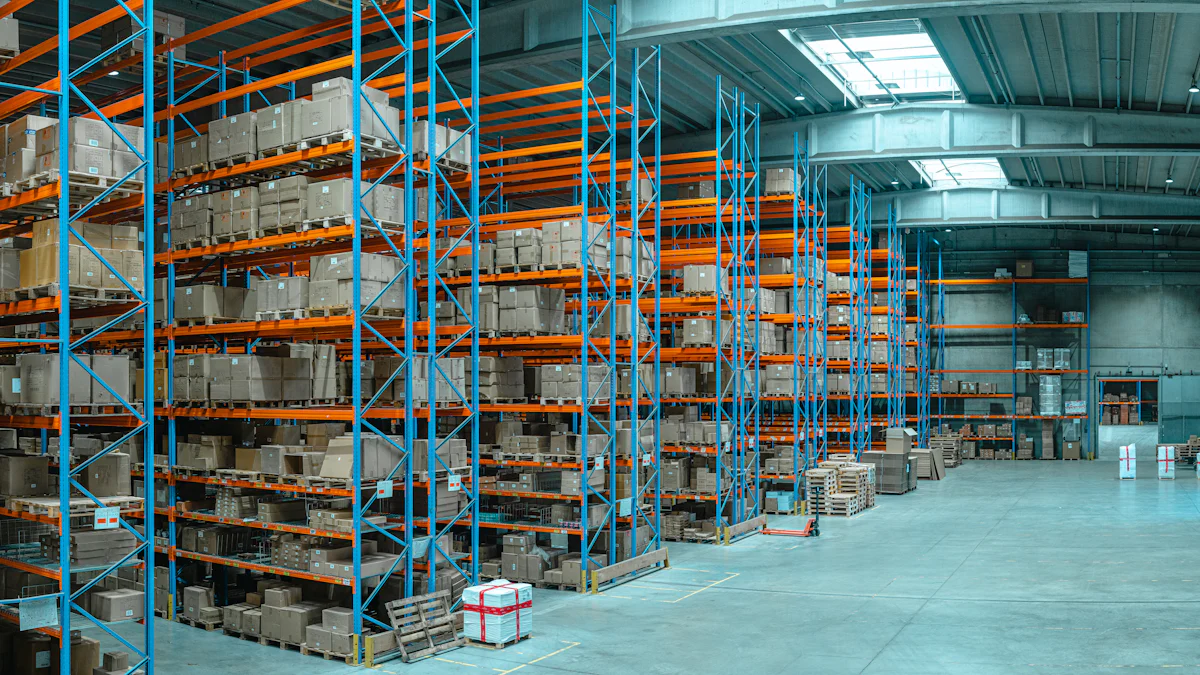Why Visibility is the Game-Changer in Supply Chain Optimization

Supply chain visibility is a strategic imperative for global businesses, with a significant 77% of companies investing in enhancing visibility last year. In fact, 80% of organizations are currently engaged in projects to bolster their supply chain visibility, reflecting its critical role in operations. Post-COVID, 77% of companies plan to further amplify their focus on supply chain visibility. Embracing this transformative concept is key to unlocking the full potential of supply chain optimization.
The Importance of Visibility
Enhancing Transparency
Transparency in the supply chain is not merely a buzzword; it is a strategic advantage that companies are actively pursuing. The benefits of transparency extend beyond operational efficiency to building trust and credibility among stakeholders. By fostering an environment of openness, organizations can enhance collaboration and strengthen relationships with suppliers, distributors, and customers alike.
Real-Time Decision Making
In today's fast-paced business landscape, the ability to make decisions based on real-time data is paramount. Monitoring inventory levels in real-time allows businesses to optimize stock levels, reduce carrying costs, and prevent stockouts. Moreover, the capability to swiftly respond to demand changes enables companies to meet customer expectations promptly and maintain a competitive edge in the market.
Risk Mitigation
Identifying potential risks and addressing them proactively is a cornerstone of effective supply chain management. By leveraging visibility tools, businesses can pinpoint bottlenecks in their operations and take corrective actions before they escalate into larger issues. Furthermore, by reducing delays and inefficiencies, companies can streamline their processes, minimize disruptions, and ensure smooth operations across the entire supply chain network.
Technologies Enabling Visibility

IoT Sensors
Tracking goods movement
IoT sensors play a pivotal role in tracking the movement of goods within the supply chain network. By leveraging these advanced sensors, companies can monitor the real-time location of products as they traverse through various stages of the supply chain. This level of visibility enables businesses to optimize transportation routes, minimize transit times, and ensure timely delivery of goods to their intended destinations.
Monitoring environmental conditions
In addition to tracking goods movement, IoT sensors also provide valuable insights into monitoring environmental conditions. These sensors can detect factors such as temperature, humidity, and light exposure, ensuring that sensitive products are stored and transported under optimal conditions. By proactively monitoring environmental parameters, companies can prevent spoilage, reduce product damage, and maintain the quality of their goods throughout the supply chain journey.
RFID Tracking
Real-time location tracking
RFID tracking technology revolutionizes real-time location tracking within industrial environments. By implementing RFID systems, organizations can gain instant visibility into the whereabouts of assets, inventory items, and equipment across large facilities. This level of precision enables businesses to streamline operations, improve asset utilization, and enhance overall operational efficiency by eliminating manual tracking processes and reducing human errors.
Inventory management
RFID tracking goes beyond simple location identification; it extends to efficient inventory management practices. With RFID technology in place, companies can automate inventory counting processes, track stock levels in real time, and prevent stockouts or overstock situations. This automated approach to inventory management not only saves time but also enhances accuracy, leading to optimized stocking levels and improved order fulfillment rates.
Supply Chain Management Software
Data integration
Effective supply chain management software facilitates seamless data integration across multiple touchpoints within the supply chain ecosystem. By consolidating data from various sources such as suppliers, manufacturers, distributors, and retailers, businesses can gain a comprehensive view of their operations in real time. This integrated approach allows for better decision-making processes based on accurate and up-to-date information regarding inventory levels, production statuses, and demand forecasts.
Analytics and insights
Supply chain management software empowers companies with advanced analytics capabilities that provide actionable insights for optimizing supply chain operations. By analyzing historical data trends, identifying patterns in consumer behavior, and forecasting future demand scenarios, businesses can make informed decisions to drive operational efficiency and enhance customer satisfaction. These insights enable proactive measures to be taken in response to market dynamics or internal operational challenges swiftly.
Real-World Applications

Case Study: Retail Industry
Inventory Management
Effective inventory management is the cornerstone of operational success in the retail industry. By implementing advanced visibility solutions, retailers can optimize their stock levels, reduce excess inventory costs, and prevent stockouts. Utilizing real-time data insights from IoT sensors and RFID tracking technology, retailers can streamline their inventory processes, enhance order fulfillment accuracy, and ultimately improve customer satisfaction. The ability to track products throughout the supply chain journey enables retailers to maintain optimal stock levels, minimize wastage, and meet consumer demands promptly.
Customer Satisfaction
Customer satisfaction is paramount in the retail sector, and visibility plays a crucial role in enhancing the overall shopping experience. With real-time visibility into product availability, order status updates, and delivery tracking information, retailers can provide customers with transparency and reliability throughout their purchase journey. By leveraging supply chain management software for data integration and analytics capabilities, retailers can gain valuable insights into consumer behavior patterns, preferences, and trends. These insights empower retailers to personalize marketing strategies, optimize product offerings, and deliver exceptional customer service that fosters loyalty and drives repeat business.
Case Study: Manufacturing Sector
Production Efficiency
In the manufacturing sector, production efficiency is a key driver of competitiveness and profitability. Leveraging visibility technologies such as IoT sensors and RFID tracking systems enables manufacturers to monitor production processes in real time, identify inefficiencies or bottlenecks, and implement corrective measures swiftly. By gaining end-to-end visibility into their operations, manufacturers can optimize resource utilization, minimize downtime, and enhance overall productivity. Real-world case studies have demonstrated how companies like Philip Morris have utilized digital twin technology to drive manufacturing insights effectively.
Supply Chain Resilience
Ensuring supply chain resilience is essential for manufacturers to mitigate risks and maintain operational continuity. By embracing advanced visibility solutions that offer transparency and traceability across the supply chain network, manufacturers can proactively identify disruptions or vulnerabilities in their operations. Trusting platforms like ClearMetal for supply chain requirements allows manufacturers to turn reliability and transparency into competitive advantages. Real-world case studies on achieving supply chain visibility showcase how companies have leveraged technology to enhance resilience against unforeseen challenges while optimizing operational efficiency.
Future Trends
AI and Machine Learning
The integration of artificial intelligence (AI) and machine learning algorithms is poised to revolutionize supply chain visibility in the coming years. By harnessing AI-powered predictive analytics tools, businesses can forecast demand more accurately, optimize inventory levels dynamically, and automate decision-making processes based on real-time data insights. These technologies enable companies to proactively address potential issues before they escalate into significant disruptions while driving operational efficiency across the entire supply chain ecosystem.
Blockchain Technology
Blockchain technology offers unparalleled security and transparency benefits for supply chain management by creating immutable records of transactions along the entire value chain. Through blockchain-enabled platforms, businesses can establish trust among stakeholders by ensuring data integrity, provenance verification of goods, and secure digital contracts execution. The decentralized nature of blockchain enhances collaboration among partners while reducing fraud risks through transparent smart contracts implementation. As blockchain continues to evolve rapidly, its adoption in ensuring end-to-end visibility within global supply chains will become increasingly prevalent.
Visibility in the supply chain is not just about tracking goods; it's about staying ahead of challenges and adapting swiftly to enhance productivity. Understanding digital technologies is key to improving supply chain visibility effectively. Real-time awareness through end-to-end visibility enables quick decision-making, fostering agility and productivity. Enhancing supply chain visibility goes beyond cargo tracking; it safeguards businesses and boosts competitiveness in a dynamic market landscape. Embrace visibility to optimize your supply chain operations and secure a sustainable competitive edge.
See Also
Transforming Transportation: How Supply Chain Innovates
Seamless Success: Ensuring Supply Chain Consistency
Revealing Tomorrow's Supply Chain: AI Fusion Perspectives
